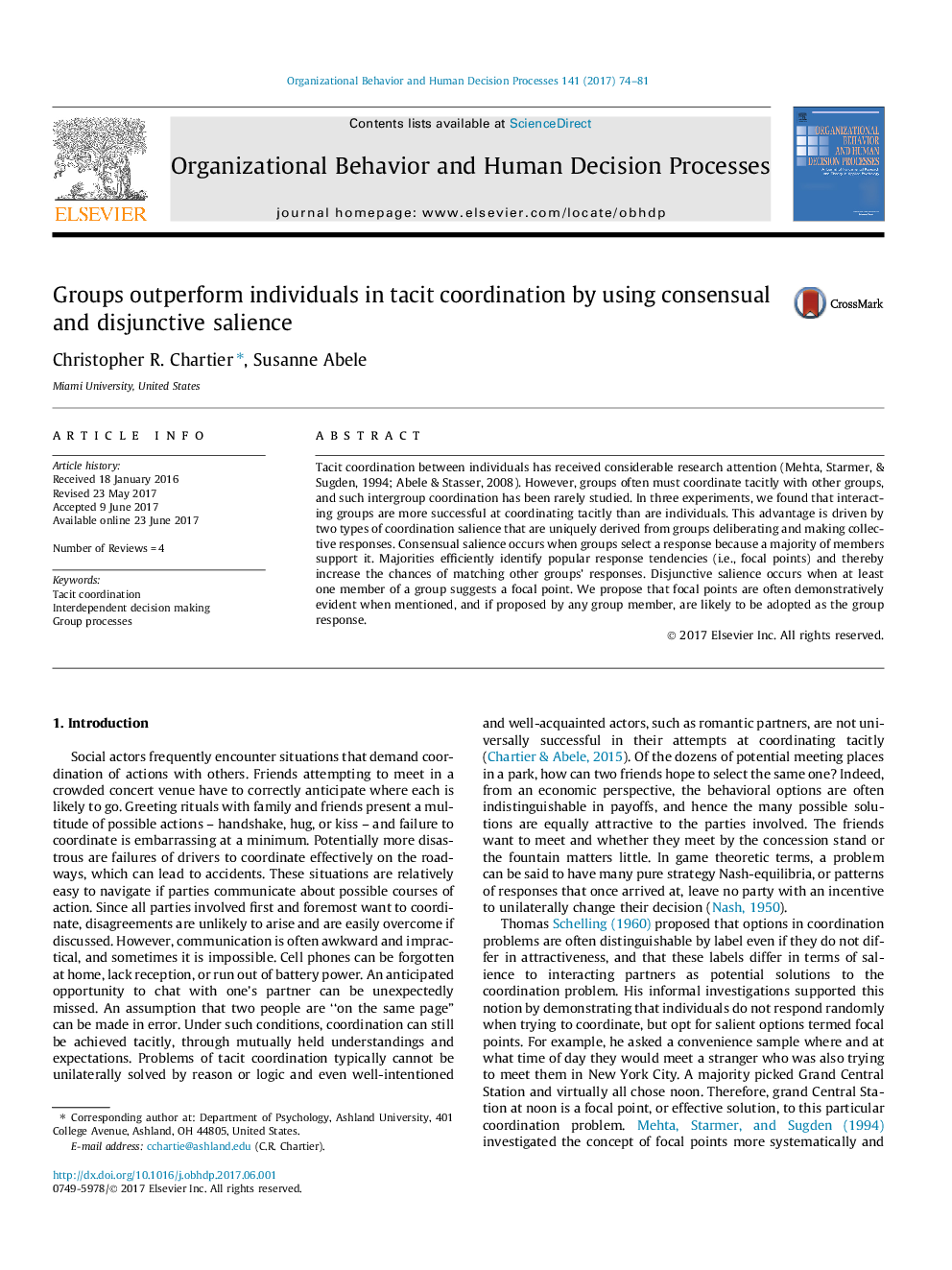| Article ID | Journal | Published Year | Pages | File Type |
|---|---|---|---|---|
| 5035316 | Organizational Behavior and Human Decision Processes | 2017 | 8 Pages |
â¢The tacit coordination performance of interacting groups is investigated.â¢Groups demonstrate far better coordination performance than individuals.â¢Majority and demonstrative group processes drive the intergroup coordination advantage.
Tacit coordination between individuals has received considerable research attention (Mehta, Starmer, & Sugden, 1994; Abele & Stasser, 2008). However, groups often must coordinate tacitly with other groups, and such intergroup coordination has been rarely studied. In three experiments, we found that interacting groups are more successful at coordinating tacitly than are individuals. This advantage is driven by two types of coordination salience that are uniquely derived from groups deliberating and making collective responses. Consensual salience occurs when groups select a response because a majority of members support it. Majorities efficiently identify popular response tendencies (i.e., focal points) and thereby increase the chances of matching other groups' responses. Disjunctive salience occurs when at least one member of a group suggests a focal point. We propose that focal points are often demonstratively evident when mentioned, and if proposed by any group member, are likely to be adopted as the group response.
